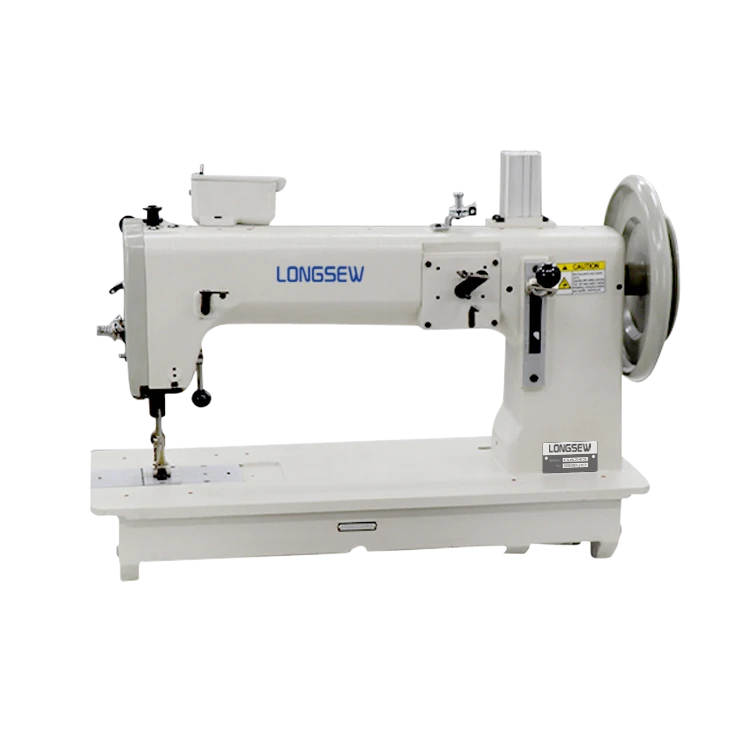Sewing Leather Successfully Using Your Standard Sewing Machine Tips and Techniques
Sewing Leather with a Regular Sewing Machine
Sewing leather can often seem like a daunting task, especially for those new to the craft. However, with a little knowledge and the right approach, you can successfully sew leather using a regular sewing machine. This article will guide you through the basics of sewing leather, ensuring that you achieve professional-looking results without the need for specialized equipment.
First and foremost, it is essential to understand the type of leather you are working with. There are several varieties, ranging from soft nubuck to stiff vegetable-tanned leather. Each type behaves differently when sewn, so ensuring that your sewing machine is compatible with your chosen leather is crucial. If you are using thin leather, a standard needle may suffice, but for thicker materials, consider using a leather needle. These needles have a wedge-shaped tip that helps pierce through the leather cleanly.
Before you begin sewing, preparing your leather is vital. Cut your pieces with sharp scissors or a rotary cutter for clean edges. Do not forget to use a cutting mat to protect your work surface. For patterns that require precision, such as bags or wallets, consider using clips instead of pins. Traditional pins can leave undesirable holes in the leather, while clips hold the pieces together securely without damaging the material.
When it comes to thread, it’s advisable to use a heavy-duty polyester or nylon thread. These threads are strong and durable, making them ideal for leather projects. It is also recommended to use a longer stitch length than you would for fabric, typically ranging from 3 to 4 mm. This longer stitch will penetrate the leather without creating too much bulk, allowing for a cleaner finish.
sewing leather with regular sewing machine

As you start sewing, take your time and go slowly. Leather is less forgiving than fabric, and mistakes can be difficult to correct. Use the presser foot to guide the leather rather than forcing it through the machine. If you find that your machine struggles with feeding the leather, consider using a Teflon or walking foot, which provides better grip and movement over the leather’s surface.
Another important aspect to consider is the type of seams you’ll be using. Flat-felled seams and French seams can provide greater strength and durability in leather projects. If you are working on thicker layers, reinforce your seams by sewing a second line parallel to the first.
Finally, finishing touches are crucial. Edge finishing treatments like edge burnishing can elevate your project and give it a polished look. Applying an edge dye can also help disguise any imperfections and enhance the overall appearance.
In conclusion, sewing leather with a regular sewing machine is entirely achievable with the right techniques and tools. By preparing your materials properly, using the appropriate needles and threads, and taking your time, you can create stunning leather projects that showcase your skills and creativity. Whether you’re making accessories, bags, or garments, the satisfaction of sewing leather is truly rewarding.
-
Industrial Cylinder Arm Sewing Machine: Revolutionizing Heavy-Duty SewingNewsJul.28,2025
-
Cylinder Arm Sewing Machine: Perfect for Special Sewing ApplicationsNewsJul.28,2025
-
Cylinder Bed Sewing Machine: Essential for Sewing Complex MaterialsNewsJul.28,2025
-
Heavy Duty Sewing Machine: The Essential Tool for Industrial ApplicationsNewsJul.28,2025
-
Computerized Pattern Sewing Machine: Revolutionizing Precision StitchingNewsJul.28,2025
-
Heavy Duty Industrial Sewing Machine: Power Meets PrecisionNewsJul.28,2025
-
Leather Sewing Machine: The Industrial Standard for Tough MaterialsNewsJul.18,2025





























